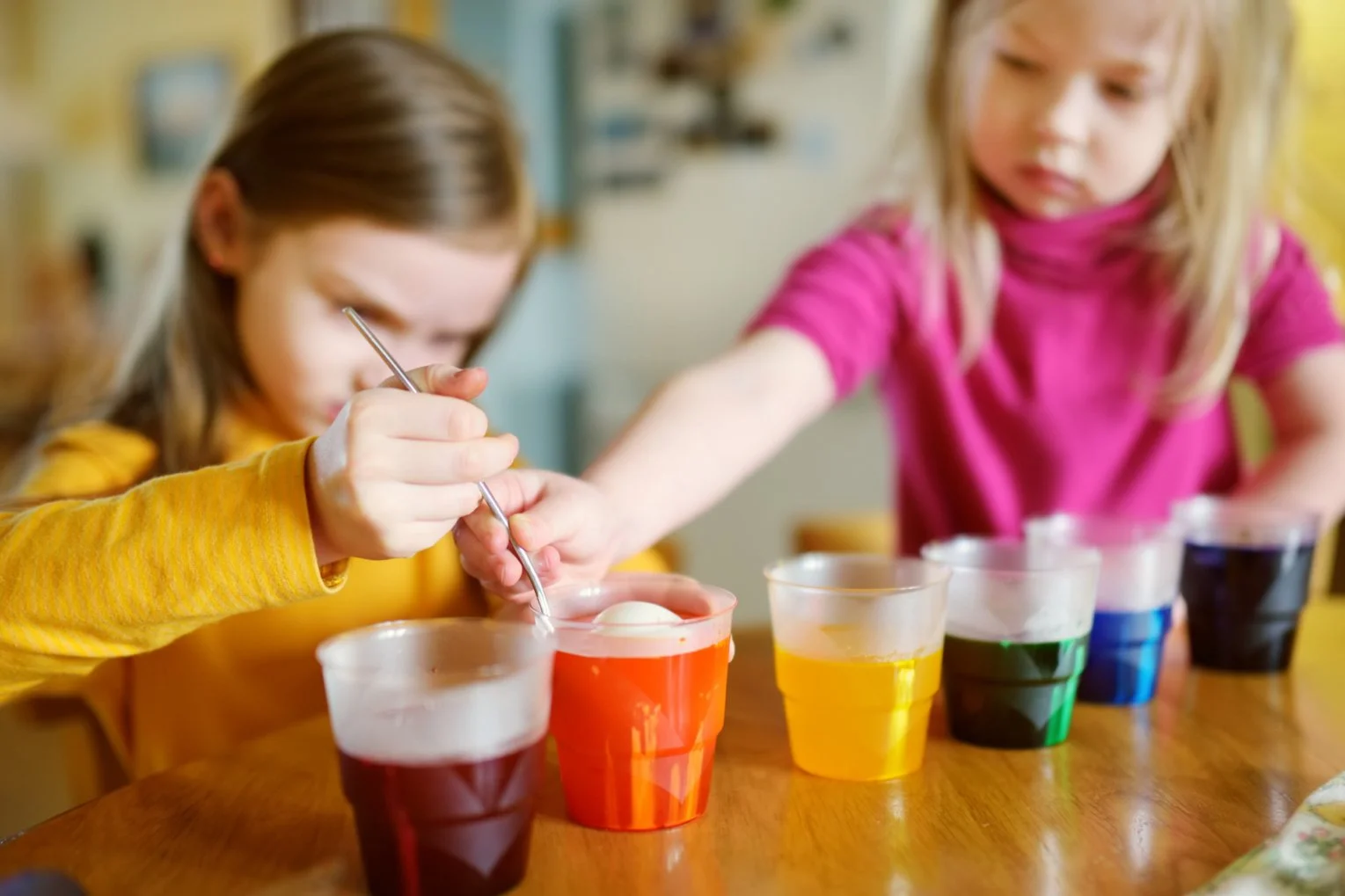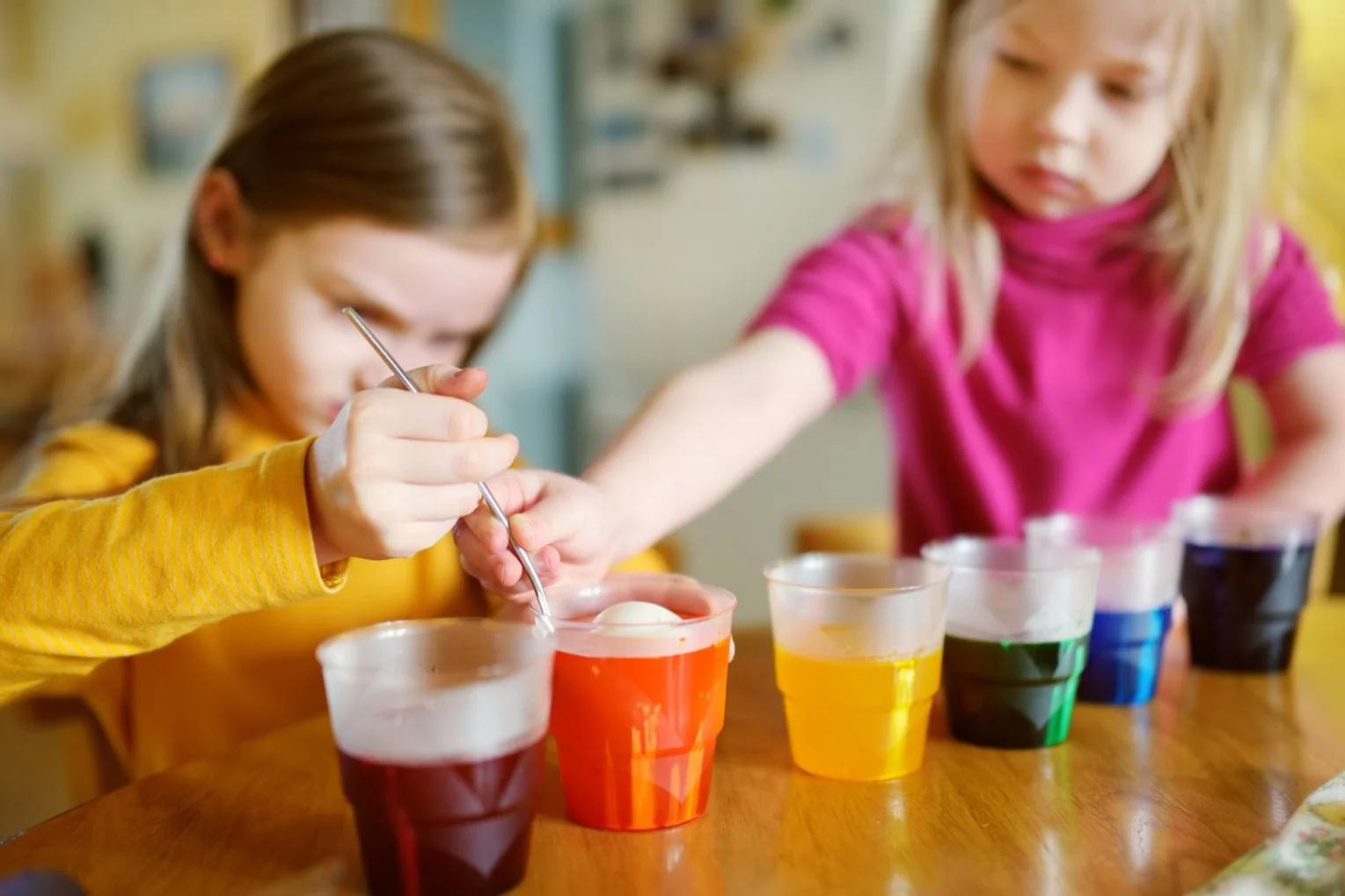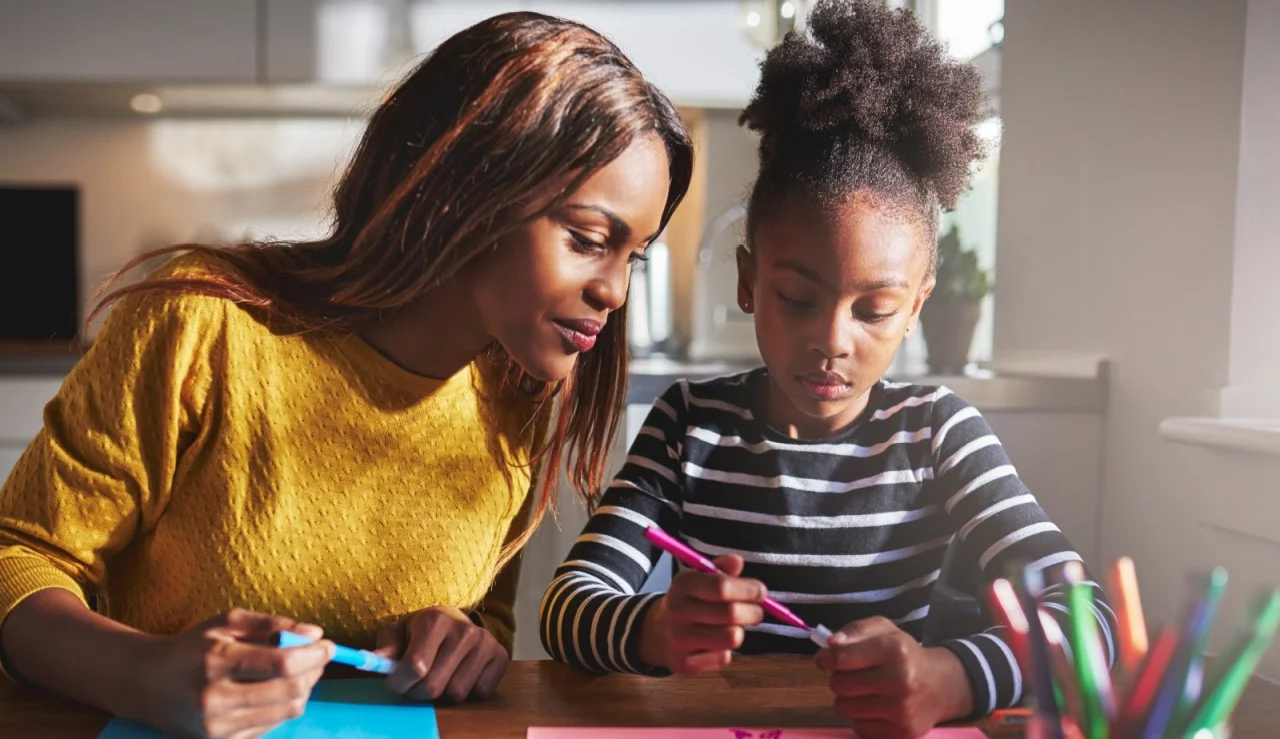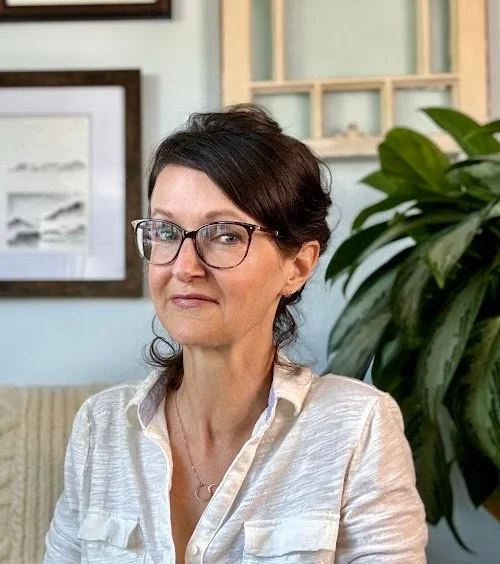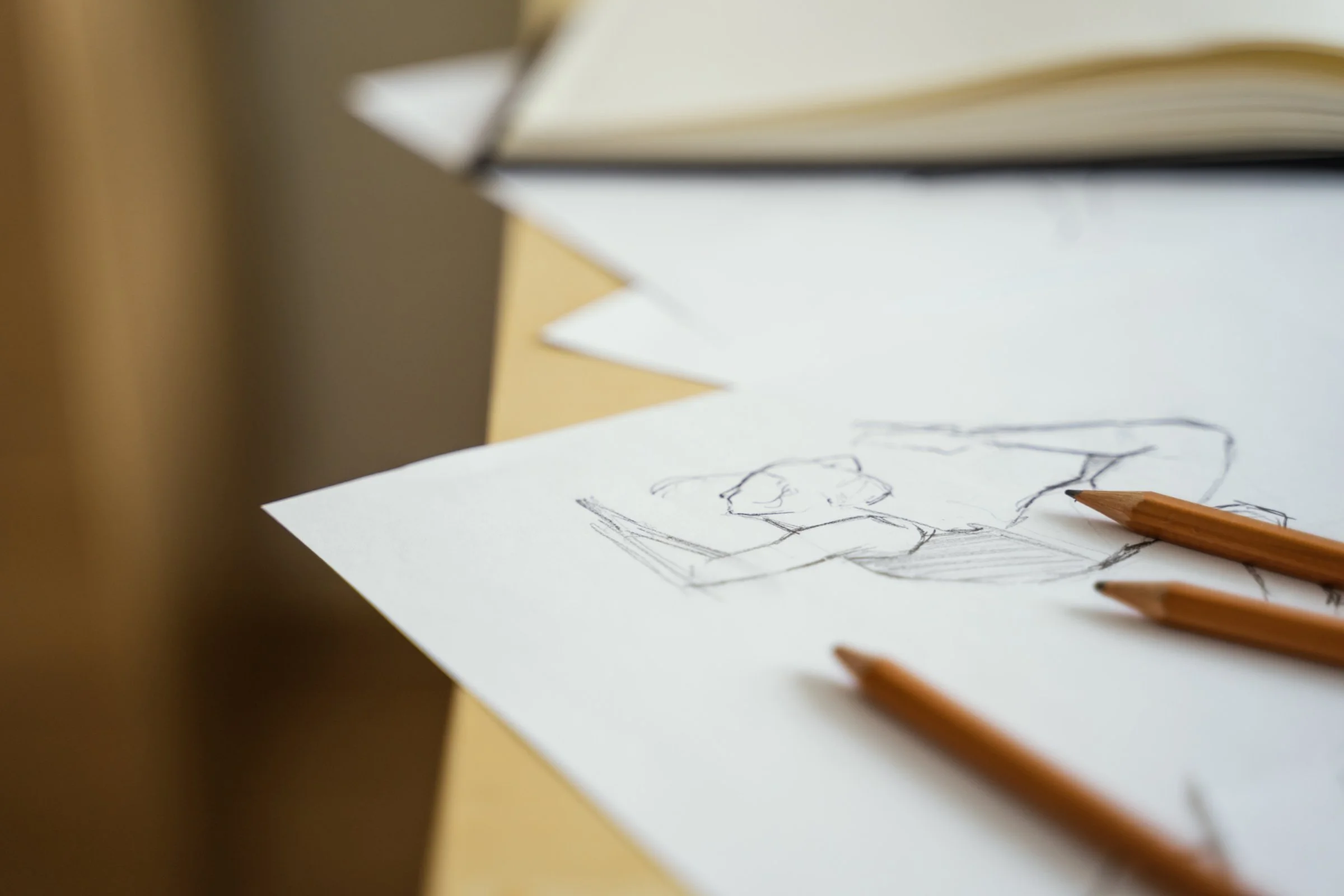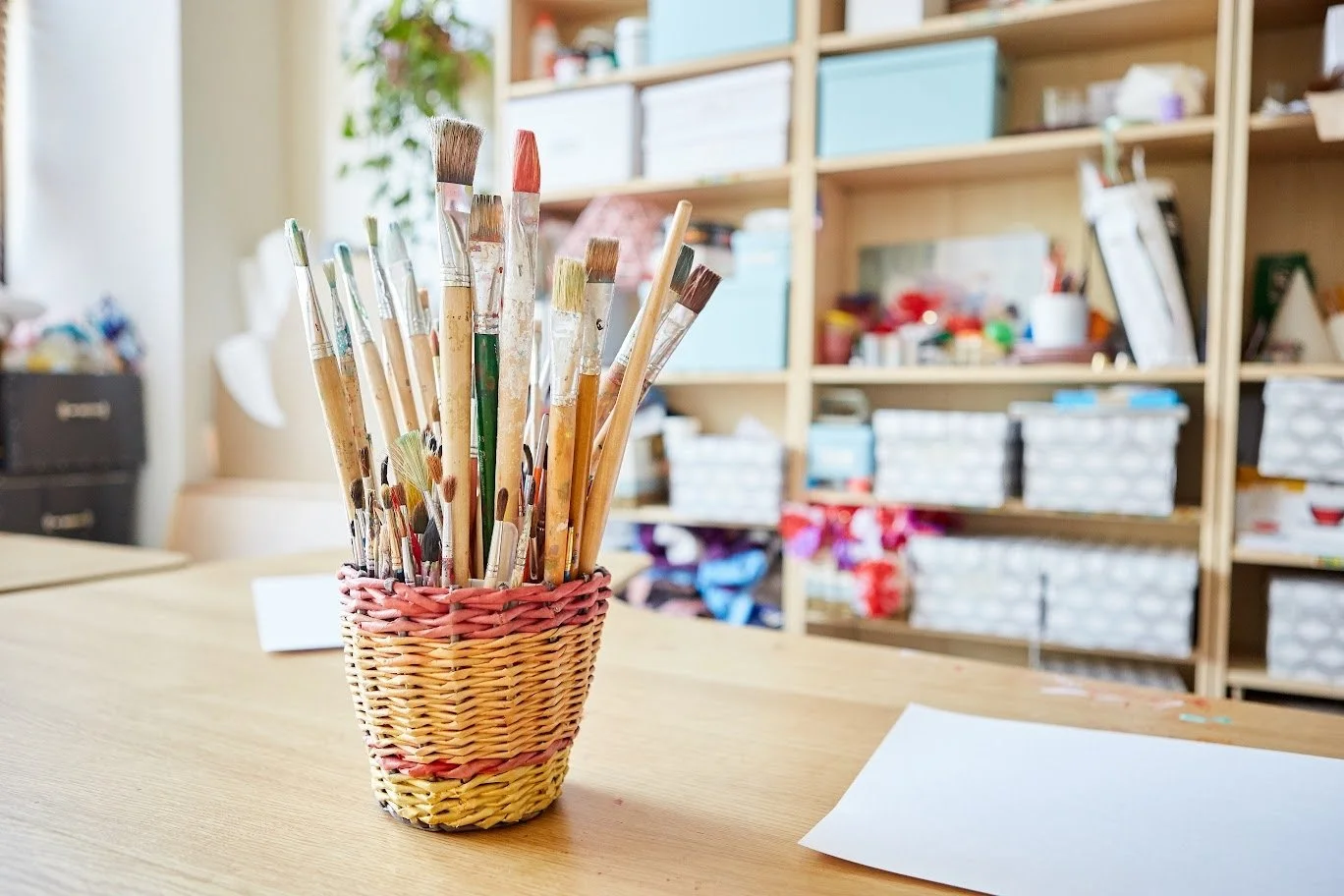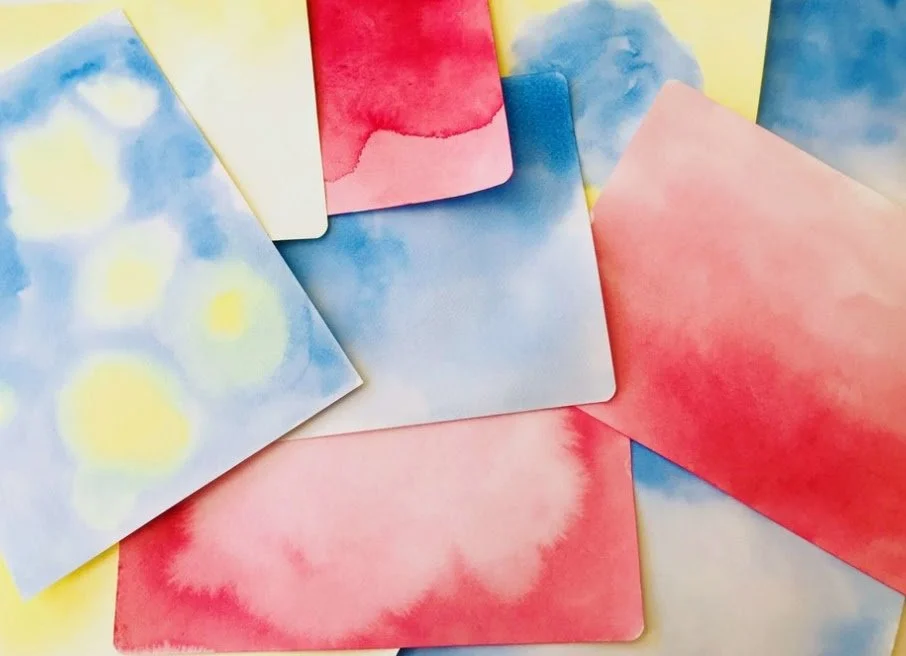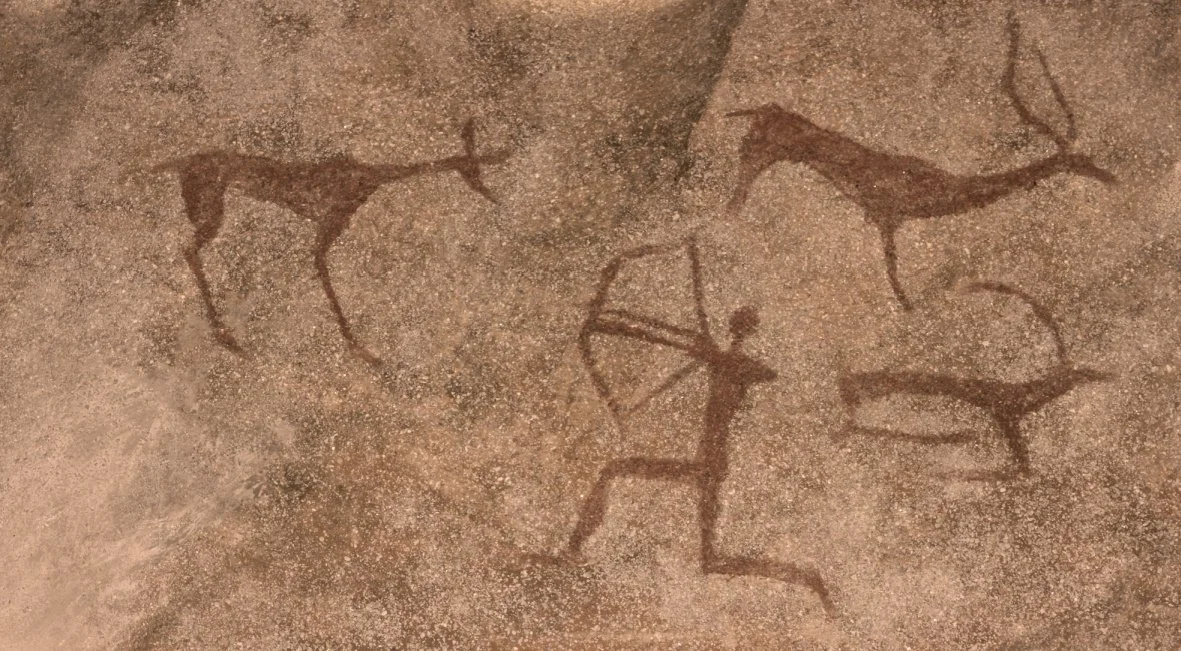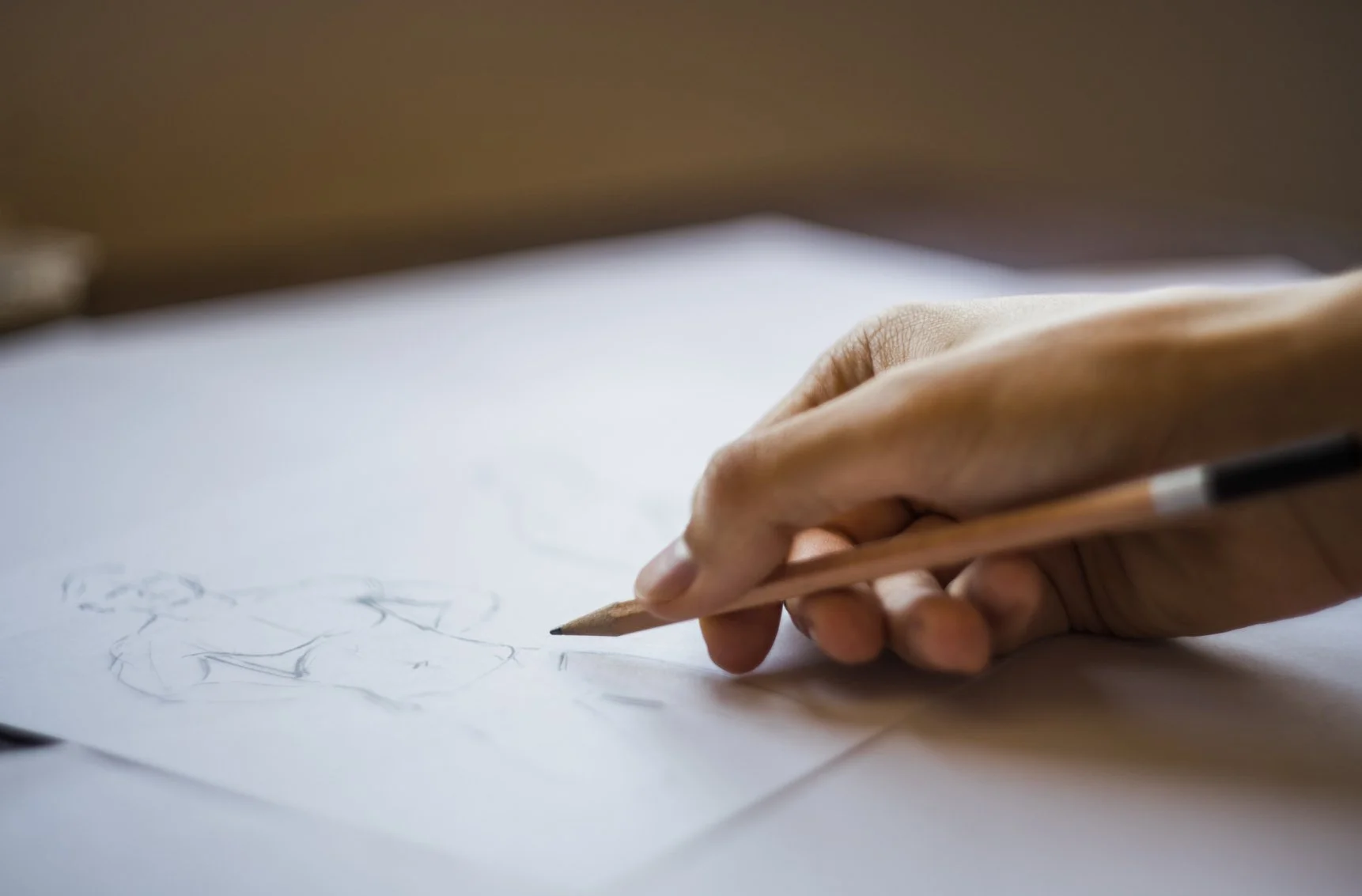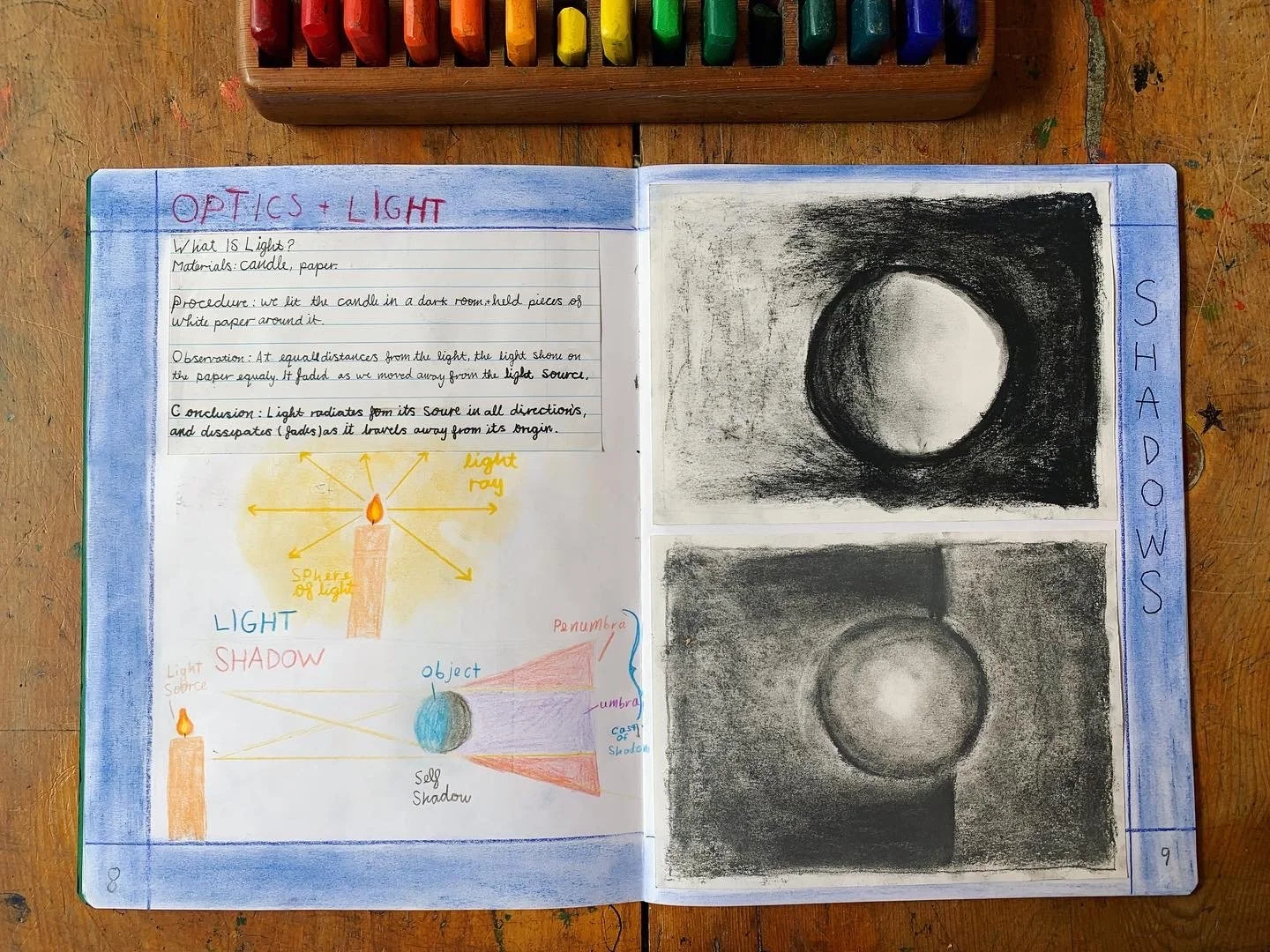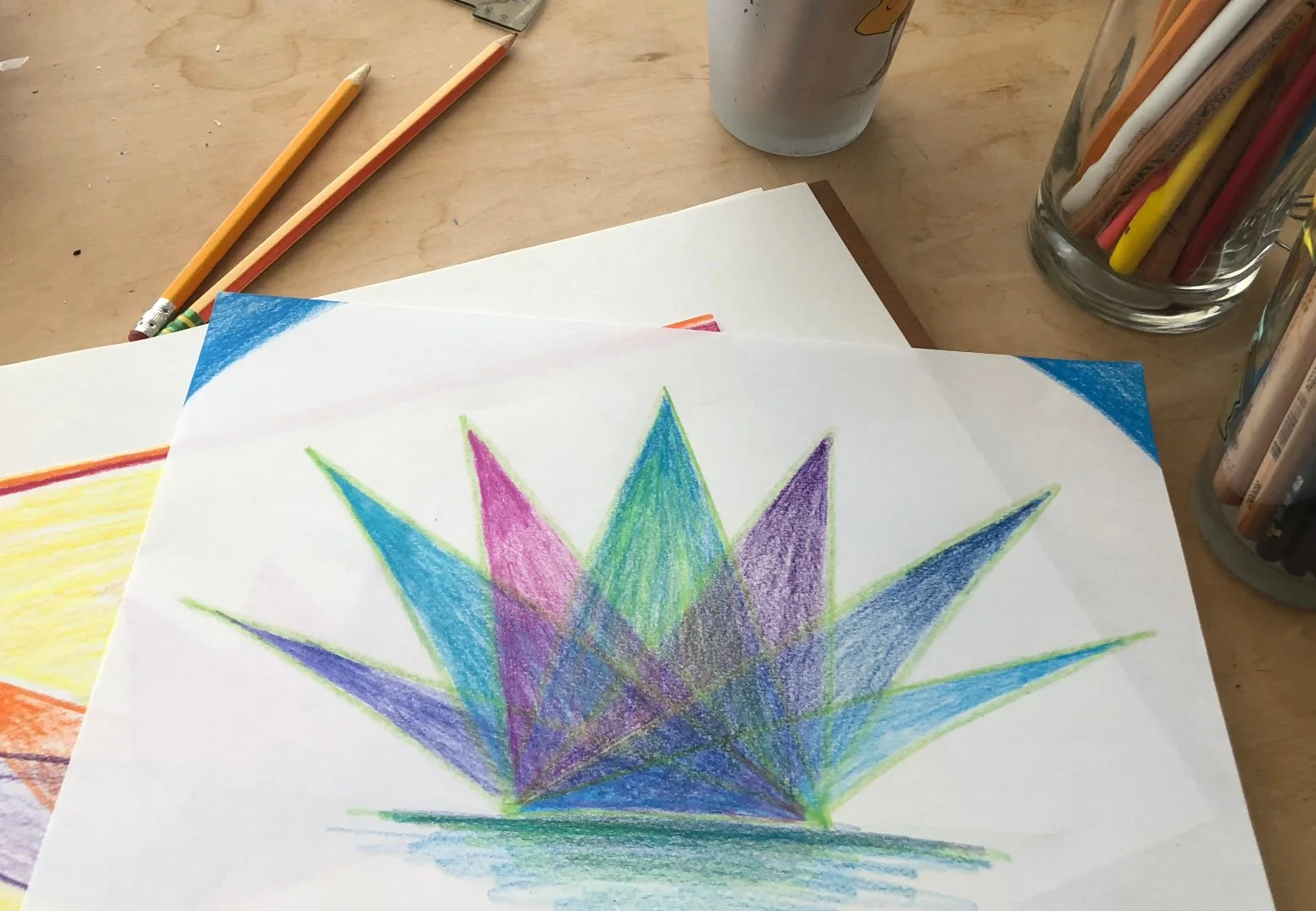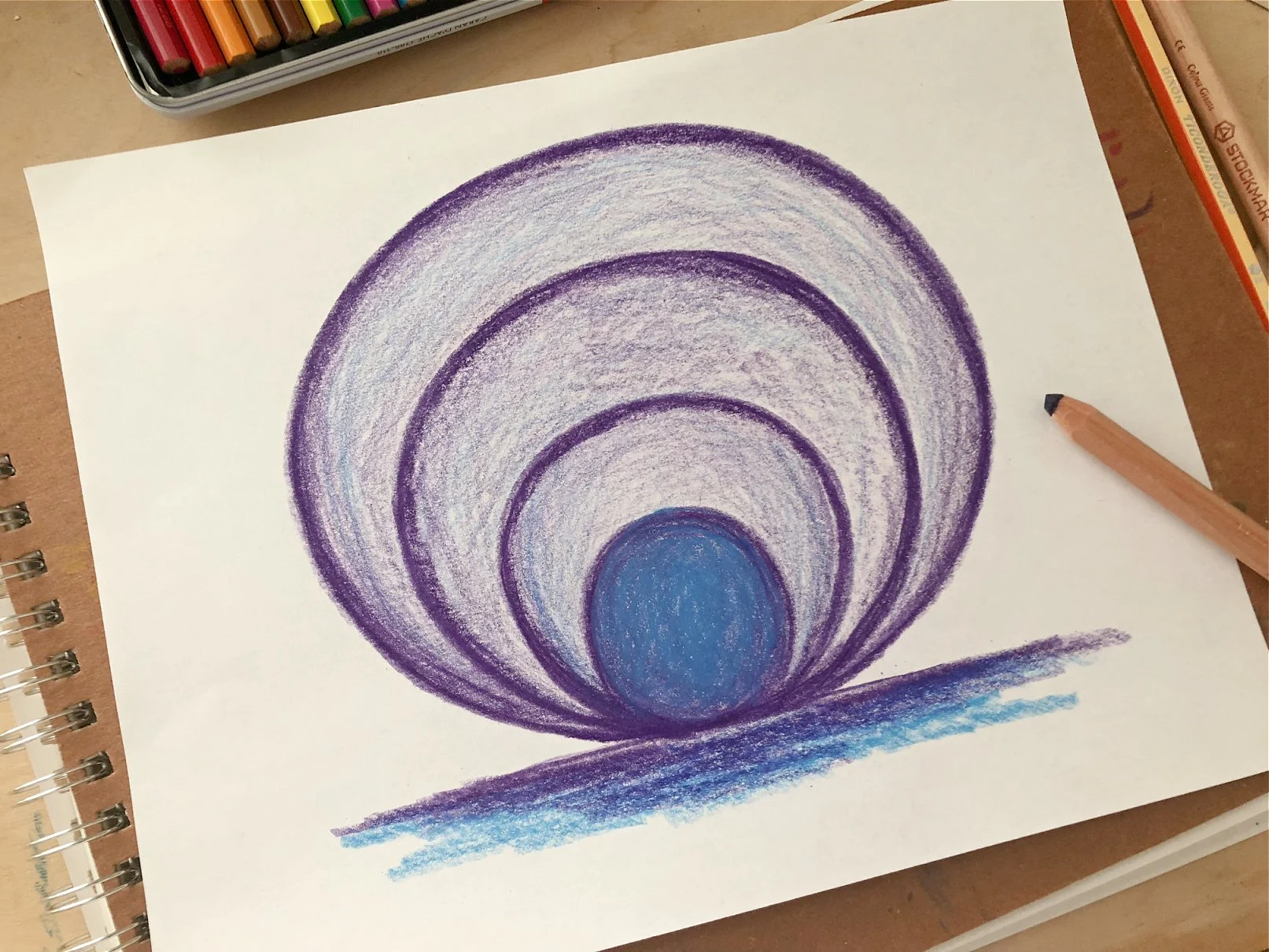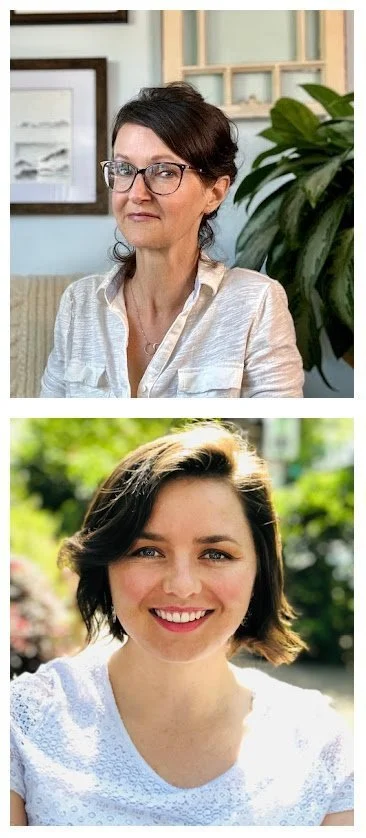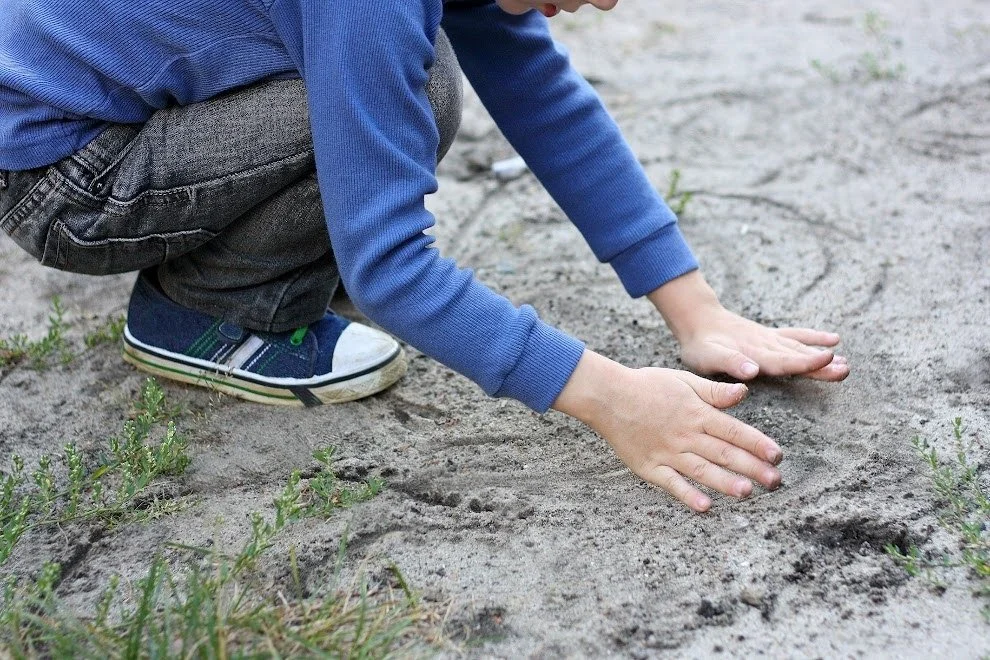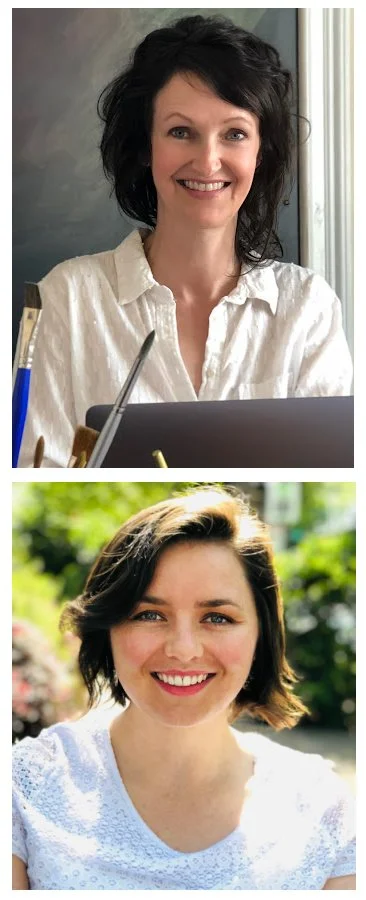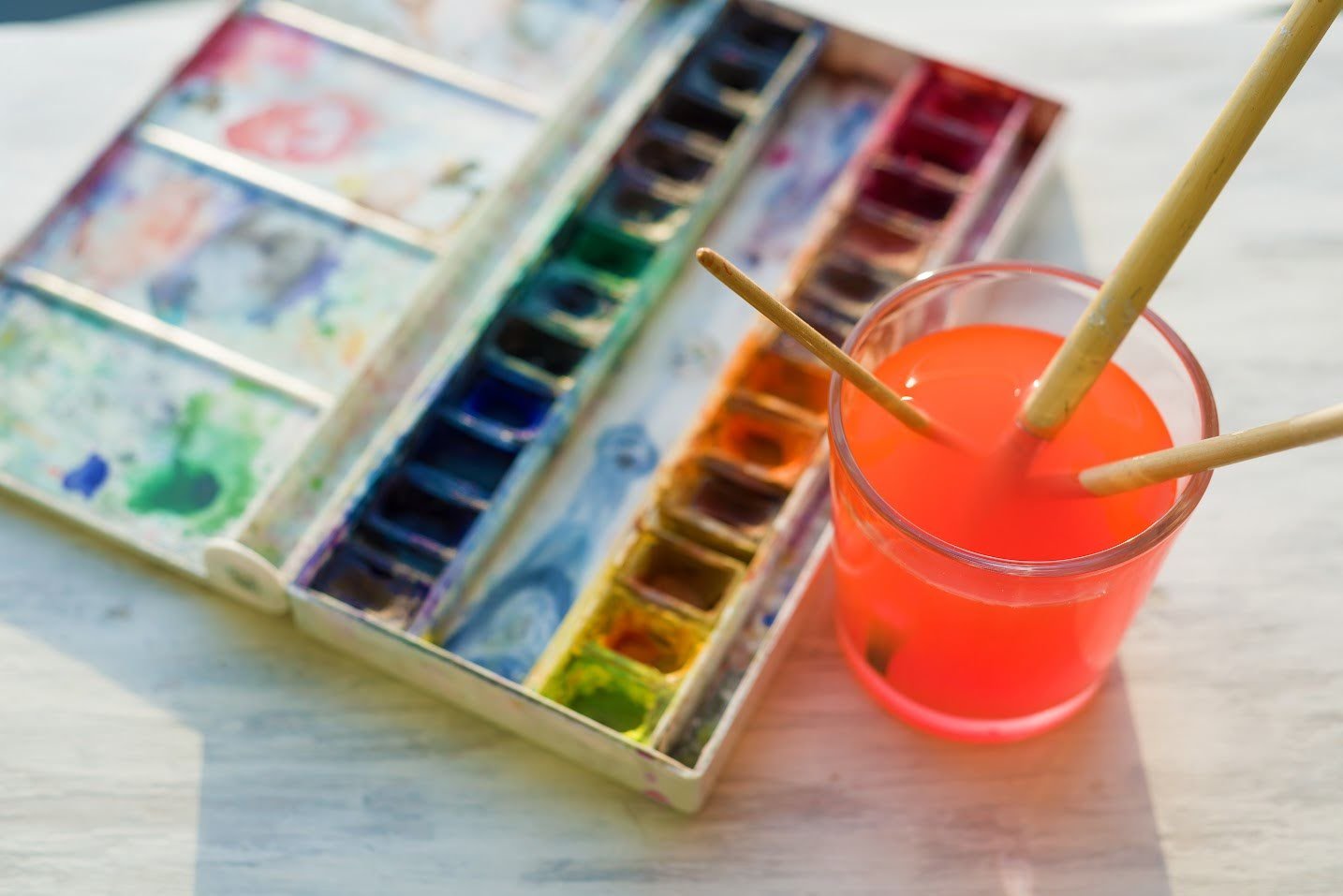
Waldorfish Blog
The Quiet Power of a Weekly Art Rhythm
Where can you find a place for art in the rhythm of your home life?
In the busyness of homeschooling life, it’s easy to feel like we’re constantly moving - navigating lessons, meals, dishes, and the emotional weather of a growing family.
Amid all that motion, creating (and returning to) a weekly rhythm that includes art can feel like a gentle anchor.
This rhythm doesn’t have to be elaborate. It doesn’t require hours of free time or a perfectly tidy table. It’s about carving out a small space, once a week, for quiet creativity. A simple drawing session, a watercolor moment, a bit of modeling with beeswax or clay. These moments aren’t “extra.” They’re essential. (And, if your rhythm is sometimes more of a gentle intention than a fixed schedule, that’s okay too. Even coming back to art ‘when you can’ has power.)
Engaging with art has many benefits for the whole family.
When art is woven into our weekly rhythm, it becomes more than just another subject to check off the list.
It becomes a shared moment of stillness. A way to regulate together. The repetition alone - of knowing art will come again next week - offers calm. It trains us (and our children) to expect beauty, to make space for process, and to feel safe in the creative unknown.
Over time, this rhythm builds a quiet kind of confidence. We learn to show up, even when we’re tired or distracted. And our children see us doing that - not perfectly, but consistently. They learn that creativity isn’t reserved for artists or experts. It’s something humans do - week after week, rain or shine.
Taking time to reconnect through art.
In that rhythm, we reconnect with each other. With the moment. And perhaps most importantly, with ourselves.
So if you’re looking for a way to ease the pace, to nourish the atmosphere of your homeschool, or simply to feel more grounded, consider this: a little art, once a week. No pressure. Just presence.
And let that be enough.
If you’d like some support creating your own weekly art rhythm, reach out and/or take a look at our Weekly Art Foundations course.
About the Author
Robyn Beaufoy is Waldorfish’s CEO, and a course instructor for some of our courses - Waldorf Art for Beginners, Weekly Art Foundations, and Simple Season. You’ll find her intuitive touches and influences throughout everything Waldorfish offers! Robyn has been in the world of education for over 25 years, with an MA in Education and a certification in Waldorf teaching - she also homeschooled both of her children. In 2012 Robyn co-founded Waldorfish.com, creating it with the vision of making Waldorf inspired-art and pedagogy more accessible, joyful, and doable for homeschoolers all over the world.
The Human Form in Motion: Why Figure Drawing Belongs in the Middle Grades of Waldorf Education
Figure drawing can be a simple activity that provides meaningful impact.
By the time a Waldorf student reaches seventh and eighth grade, their curriculum takes a bold step into the world of ideas, invention, and individuality.
They study anatomy, physiology, physics, chemistry, art history, and revolutions - both industrial and ideological. The thread running through all these blocks? A deeper understanding of the human being - not only how we function, but how we think, evolve, and express ourselves in the world.
It’s no coincidence that this is also the time when figure drawing steps into focus in a new and meaningful way.
A Longstanding Thread, Now Evolving
Figure drawing has always had a place in Waldorf art education. It shows up in the second grade Saints drawings, fourth grade Man and Animal block, and sixth grade portrait studies. But in the middle school years, this thread weaves into something more intentional and mature.
Figure drawing is an ancient practice.
Seventh and eighth graders no longer draw the human figure as a character in a story or a part of a historical tale. Instead, the human figure becomes the subject itself. This shift mirrors the adolescent’s changing worldview. Just as they begin to examine themselves and their peers more deeply - physically, socially, emotionally - they’re asked to do the same on the page.
Here, artistic expression and realism come together in a new way. Students learn the proportions of the human body, how bones and joints support movement, and how posture and gesture communicate emotion. It’s a beautiful marriage of observation and imagination.
From Observation to Expression
In the middle grades, we often begin with gesture drawings - quick, expressive sketches that capture movement rather than detail. A person walking, reaching, twisting - these simple poses invite students to see the body not as a fixed form, but as something alive, dynamic, and expressive.
Proportional studies also begin here. Students explore relationships:
How many “head lengths” tall is an average adult?
How wide are the shoulders compared to the head?
Where do the wrists fall in relation to the hips?
But it doesn’t stop at measurement. These explorations naturally spark deeper conversations:
How does one communicate bravery with their body? Sadness? Anxiety? Confidence?
What does it mean when someone stands tall with arms relaxed at their sides versus hunched with a lowered head?
This is more than drawing—it’s social-emotional learning through art.
Don’t hesitate, give figure drawing a try!
A Crucial Conversation for the Middle Grades
This kind of artistic inquiry is especially meaningful in middle school. Students are developing new social awareness. They’re navigating friendships, boundaries, and identity. Understanding how humans communicate through non-verbal cues- and how to observe them objectively - is powerful. It fosters empathy and self-awareness.
Here, the educator’s role is to shift focus from scrutiny to celebration. We are not drawing to judge or idealize the body, but to appreciate its ability to balance, to express, and to move with intention
Bringing in Art History & Storytelling
Art history naturally enriches figure drawing work. Classic paintings and sculptures offer timeless examples of how gesture communicates.
What emotion was Emanuel Leutze trying to convey by painting George Washington standing tall in profile, chin up, gaze forward in Washington Crossing the Delaware?
What story were early cave artists telling when they etched upright warriors, spears in hand, into stone?
What does a dancer’s curved spine and extended arms express in Degas’ sketches?
There are no wrong answers - only opportunities for discussion.
This is what figure drawing in middle school offers: a chance to merge observation, interpretation, and personal insight.
For Parents and Educators Supporting This Work
Process over product, and enjoy!
If you feel unsure about your own drawing skills, take heart. You don’t need to be a professional artist to guide this work! What matters is modeling curiosity, showing up alongside your child, and being open to discovery.
At Waldorfish, we teach figure drawing as a progression - one that’s developmentally appropriate and inviting, not intimidating. In our Diving Deeper course (the next step after Weekly Art Foundations), we offer guided lessons in gesture drawing, proportion, and expressive form - designed with middle schoolers and their parents in mind.
Ready to Take the Next Step?
If you’re looking to deepen your middle schooler’s Waldorf art education, explore our Weekly Art Diving Deeper course.
It’s the perfect companion to the growth, complexity, and creativity blooming in your students at this stage.
About the Authors
Robyn Beaufoy is Waldorfish’s CEO, and also a course instructor for Simple Season, Waldorf Art for Beginners, and Weekly Art Foundations. You’ll find her intuitive touches and influences throughout everything Waldorfish offers. Robyn has been in the world of education for over 25 years, with an MA in Education and a certification in Waldorf teaching - she also homeschooled both of her children for some of that time. In 2012 Robyn co-founded Waldorfish.com, creating it with the vision of making Waldorf inspired-art and pedagogy more accessible, joyful, and doable for homeschoolers all over the world.
Caitlin Amajor is Waldorfish’s course instructor for Geometry grades 5 & 6, and Botany, as well as our Administrative Assistant. From a young age, Caitlin has been immersed in Waldorf education, attending a Waldorf school from K-8. After receiving a BA in History, Caitlin gained her certification in Waldorf teaching, and spent seven years as a Waldorf class teacher in the upper grades. With a special fondness for watercolor painting and geometry, Caitlin loves bringing Waldorf education to her students all over the world, and seeing their own individuality and style bloom from the curriculum!
What is Waldorf First Grade Curriculum for Art?
Q: What is the Waldorf first grade art curriculum?
(This post is part of a series in which we answer the most common questions we receive in our inbox re: homeschooling, Waldorf curriculum/pedagogy, and whatever else comes our way! Click here to read more from the series!)
A: If you’re just getting started with your homeschooling journey, you’re probably thinking about how you’ll bring the Waldorf first grade art curriculum into your rhythm.
We’ve put together this piece as a starting place for you - we’ll be answering frequently asked questions about Waldorf art in first grade, and providing you some helpful resources to help make your artistic journey doable, meaningful, and fun!
What does the Waldorf art curriculum include in first grade?
In Waldorf education, first grade is a pivotal milestone in a child AND educator’s educational and developmental journey. Amongst the newness of the grade (from academics, to daily routine, to social dynamics) art is incorporated into nearly every aspect of the curriculum (to learn more about the role of art in education across all the grades in Waldorf curriculum, click here!)
Each family and school will vary their art curriculum, but generally, a first grader will enjoy experiences with wet-on-wet watercolor painting, form drawing, pencil and crayon drawing, and the joy of learning through storytelling.
How is chalk art used in first grade?
In Waldorf first grade classrooms, chalk art is a tool used by the educator to enliven and enhance the curriculum through pictures. The drawings change frequently, and usually relate to the subject being studied or the season at hand.
The letter “G” for goose- all in one image!
In a first grade classroom, one might observe the drawing of a goose combined with the image of a letter G (see an example to the right!) and the story of the day may be the fairy tale of the golden goose. Together, the image and the story work to enliven the language arts lesson for the children as they get to know the letter G!
At this point, chalk drawing is a medium generally used only by the educator, and one that provides endless possibilities in bringing the curriculum to life on the chalkboard. To learn more about chalk drawing and the role it plays in Waldorf education, click here.
How is Waldorf watercolor painting introduced in first grade?
A particular style of watercolor painting, often referred to as wet-on-wet painting, is practiced throughout the grades in Waldorf schools, though most often in the lower grades, 1-4. This technique of painting involves using liquid watercolor pigments on damp paper. The resulting effect is paintings that are saturated in color and unique to each artist.
Watercolor paintings from our first grade course- each is different and unique!
In grade one, the lessons are simple color experiences guided by the teacher. It is purely artistic work - there is no expectation of the children creating a specific form or picture of something. Colors are introduced slowly and individually, giving the children plenty of time to enjoy and experience the color inwardly and deeply. To learn more about the pedagogical foundations of Waldorf first grade watercolor painting, click here.
What is form drawing?
Form drawing is a practice which allows children (and adults!) to engage with space, balance, and symmetry through drawing. In first grade, form drawing starts with simple basics, as we are just introducing the child to the world around them. Form drawing also provides foundational exercises that support handwriting, pencil grip, and much more.
You’ll often see the children’s exploration of straight and curved lines hanging on the walls in Waldorf first grade classrooms. The children are guided through the practice of drawing straight and curved lines on the chalkboard, paper, in sand, even in the mud, etc. Building in a variety of layers of experience helps the child's body internalize the movements more deeply.
Though it may seem simple, what the first grade begins to discover is that straight and curved lines are in everything, building connections with their environment and natural world around them. To learn more about first grade form drawing, click here.
Form drawing can be done inside, outside, or wherever inspiration strikes!
How do I incorporate form drawing into the first grade?
Form drawing is best done as a regular practice in a child’s daily rhythm. Shorter, but regular sessions truly allow the various forms (and the process to create them!) an opportunity to deeply integrate into the child’s body and soul.
To really make something a part of your daily practice (ten to fifteen minutes per day is ideal!), put it on the calendar, follow through, and be intentional. Soon, the routine will become second nature, and you will truly reap the benefits that rhythm provides. (To learn more about Waldorf form drawing, click here!)
What is the significance of storytelling in Waldorf education?
Storytelling is an important tool in Waldorf education, especially in the lower grades! The Waldorf curriculum is rich in story, from nature stories and fairy tales, form drawing stories, through great myths and legends, to biographies and historical stories.
Oftentimes, stories are told orally, or without the use of a book or notes. It’s a way of connecting with the child, storyteller to listener, and allowing the content to come alive in a rich and organic way. When we don’t rely on the written word, the storyteller is able to tailor the story to the needs of the child. Though you may not know it, you already are a storyteller – you can get started right away with bringing stories into your regular routine! Click here to learn more!
How do I get started with Waldorf art?
First and foremost- get your supplies in order!
One of the early hurdles of getting started with Waldorf art is the question of supplies- what to buy, where to buy it, how much to spend, and how to use and care for everything! It’s easy to get caught up in buying the art supplies you think you should purchase (while spending a lot of money!) and then leaving it to collect dust on the shelf for fear of wasting it, using it incorrectly, or just not knowing how to use it.
Sound familiar?
So, start at the beginning, and get the support and resources you need right away! Our Waldorf Art for Beginners course was designed to walk you through the most commonly found artistic mediums in Waldorf education, including watercolor painting, crayon, and chalk drawing. This includes what to buy (and what not to buy!) how to care and store for everything, and then, how to use the supplies to create beautiful artwork.
Wanting to make Waldorf art a part of your weekly routine? Our Weekly Art Foundations course provides weekly lessons (enough for an entire school year!) that provides step-by-step instruction using Waldorf art techniques.
Use your resources! Head to our blog post Starting Waldorf First Grade to find all of our resources on art, storytelling, Waldorf pedagogy, and more.
Whew! Ok, it’s time to jump in and explore
Questions? You can connect with us here - we’re happy to help.
About the Authors
Robyn Beaufoy is Waldorfish’s CEO, and a course instructor for two of our courses - Waldorf Art for Beginners and Weekly Art Foundations. You’ll find her intuitive touches and influences throughout everything Waldorfish offers! Robyn has been in the world of education for almost 30 years, with an MA in Education and a certification in Waldorf teaching - she also homeschooled both of her children. In 2012 Robyn co-founded Waldorfish.com, creating it with the vision of making Waldorf inspired-art and pedagogy more accessible, joyful, and doable to homeschoolers all over the world.
Caitlin Amajor is Waldorfish’s course instructor for Geometry grades 5 & 6, and Botany, as well as our Administrative Assistant. From a young age, Caitlin has been immersed in Waldorf education, attending a Waldorf school from K-8. After receiving a BA in History, Caitlin gained her certification in Waldorf teaching, and spent seven years as a Waldorf class teacher in the upper grades. With a special fondness for watercolor painting and geometry, Caitlin loves bringing Waldorf education to her students all over the world, and seeing their own individuality and style bloom from the curriculum!
Waldorf Art at Home: Getting Your Supplies in Order
Creating a positive environment for your at-home art class requires a little bit of thought, planning, and intention.
A starting point? Give yourself a solid foundation.
This might look like finding a comfortable and large enough workspace, finding the right time of day that works best for your children and schedule…etc.
Here’s another one: getting your supplies in order!
Taking a little time to prepare your art supplies will make a big, positive impact!
Making art classes successful requires some prep, and in a way, the set-up, materials, and clean-up matter more than the lesson itself. If all of these things are handled, then you (and the students!) can focus, and truly enjoy and learn from the lesson at hand.
Looking at supply lists (especially for Waldorf art) can make your head spin a bit; it can feel like a lot of stuff, and expensive stuff at that.
How can you be sure you’ll actually use what you buy? Are there other alternative brands that will give you the same result? How do you store everything to keep it in good shape for the next class?
These questions are why we created our Waldorf Art for Beginners course!
In it, we give you the full walk-through of supplies you’ll need for Waldorf art. The kind of supplies you’ll actually want to use, and which brands provide quality in terms of experience and result. We share what we’ve learned from our many, many years of experience both in the classroom as well as homeschooling plus lessons learned from a lot of trial and error!
At this point, you may be asking yourself, “Does the specific kind of art supply really matter? Aren’t they all basically the same?”
We’re here to tell you that they definitely are NOT, and often, spending a bit more at the beginning will save you frustration and needing to spend more down the road.
Art class should feel enjoyable, fun, and like your time was used wisely to create and grow. We highly recommend controlling the variables that you can, and having the best supplies at hand will give you the best odds of results your artists are happy with.
A prepared, organized workspace leaves room for a peaceful, creative art class.
For example, let’s talk about painting paper, an item that seems fairly inconsequential in the grand scheme of painting, but actually really matters a LOT.
For watercolor painting, the paper needs to be thick enough to withstand the water, the friction of the brush, and the layers of paint. With that in place, the child can paint to their heart’s content without noticing the paper. Instead they’re noticing the experience, the color, and forming those skills and connections we strive for as educators!
But, without the right kind of paper, the lesson and experience becomes secondary. Too-thin paper will pill, rip easily, and not hold the pigment in a strong way. It is very frustrating for the child, as they aren’t able to create freely.
All this is to say: get the best supplies you can.
Not necessarily the most expensive, not the most “Waldorf”, but the items that will make the lesson, creativity, and experience central to the art class. You won’t regret it, we promise!
Our Waldorf Art for Beginners course is open for enrollment year-round, and provides a full, comprehensive walk-through of all things Waldorf art supplies: crayons, watercolor paints (and paper!), colored pencil, and more. PLUS instructor support, links to our favorite vendors, and forever access if ever you need to reference the course again for helpful reminders.
About the Authors
Robyn Beaufoy is Waldorfish’s CEO, and a course instructor for Waldorf Art for Beginners, Weekly Art Foundations, and Simple Season. You’ll find her intuitive touches and influences throughout everything Waldorfish offers! Robyn has been in the world of education for over 25 years, with an MA in Education and a certification in Waldorf teaching - she also homeschooled both of her children. In 2012 Robyn co-founded Waldorfish.com, creating it with the vision of making Waldorf inspired-art and pedagogy more accessible, joyful, and doable to homeschoolers all over the world.
Caitlin Amajor is Waldorfish’s course instructor for Geometry grades 5 & 6, and Botany, as well as our Administrative Assistant. From a young age, Caitlin has been immersed in Waldorf education, attending a Waldorf school from K-8. After receiving a BA in History, Caitlin gained her certification in Waldorf teaching, and spent seven years as a Waldorf class teacher in the upper grades. With a special fondness for watercolor painting and geometry, Caitlin loves bringing Waldorf education to her students all over the world, and seeing their own individuality and style bloom from the curriculum!
Looking for something?
Welcome to Waldorfish! We started this adventure in 2012 out of a desire to make Waldorf training more accessible to class teachers in remote locations and to homeschooling families everywhere! Read more, click here.
WE WON! Our Weekly Art courses were voted “best interactive art program.” Learn more about the award, here.
A few of our most popular blog posts:
